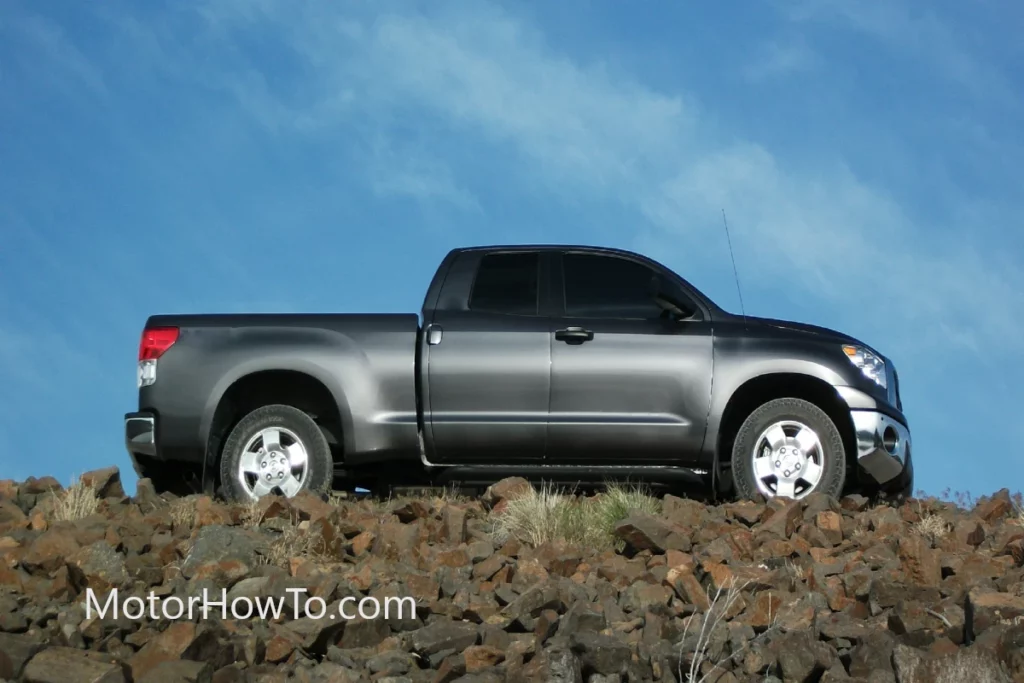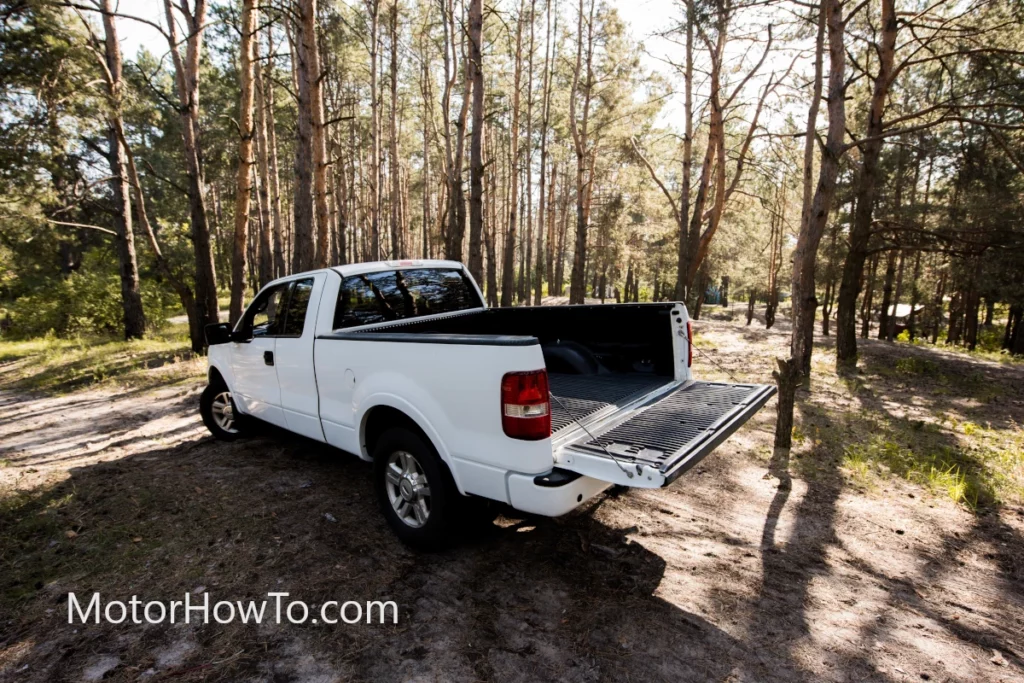Have you ever glanced at a towering pickup truck at a traffic stop and wondered how we define our road-going companions?
As we navigate our daily commutes or undertake grand road trips, the assortment of wheeled entities we share the asphalt with is diverse, and each carries its unique purpose.
The nuances, categorizations, and terminology linked with these vehicles often lead us down the rabbit hole of intriguing debates and explorations.
A pickup truck is considered an automobile. In the broadest sense, an automobile refers to any motor vehicle designed for personal use, regardless of the specific body style, which includes pickup trucks, sedans, SUVs, and more.
- The Evolution of Vehicle Classifications
- The Pickup Truck: History and Characteristics
- Defining Pickup Trucks: Are They Automobiles?
- Automobile vs. Pickup Trucks: Identifying Differences and Similarities
- Varied Classifications: International Perspectives on Automobiles and Trucks
- The Impact of Vehicle Categories on Insurance and Legislation
- Sources

Let’s delve into the captivating universe of vehicle classifications, digging deep into their history, the distinctions that set them apart, and the semantics that swirl around them.
Related:
- Will a Pallet Fit into a Pickup Truck? A Practical Guide to Load Capacity and Space Management
- Why Do People Call SUVs Trucks? Unraveling the Semantic Mysteries of Automotive Terminology
- Silverado C1500 vs. K1500: Which Pickup Truck Should You Choose?
The Evolution of Vehicle Classifications
The categorization of vehicles has witnessed a dramatic evolution that reflects society’s changing needs and technological advancements.
In the early days of motorized transportation, the distinctions were simple. There were motorized carriages designed for personal transportation and trucks for commercial use and cargo hauling.
As automotive technology progressed and diversified, so did the types and categories of vehicles, including sedans, coupes, convertibles, station wagons, sports cars, and pickup trucks.
In recent decades, however, these classifications have blurred as manufacturers respond to evolving consumer demands for versatility and specific features.
The emergence of the Sport Utility Vehicle (SUV) in the late 20th century is a prime example of this trend, combining elements of passenger cars, commercial trucks, and off-road vehicles.
The creation of subcategories such as crossover SUVs, built on car platforms for a more comfortable ride, further exemplifies the increasingly complex landscape of vehicle classifications.
Pickup trucks have evolved significantly, now offering luxury models and features historically associated with sedans or SUVs, further challenging traditional categorizations.
The Pickup Truck: History and Characteristics

The pickup truck, a staple of American life, traces its roots back to the early 20th century. Ford is often credited with the birth of the pickup, introducing the Model T Runabout with Pickup Body in 1925.
This vehicle offered a blend of the personal use of an automobile and the utility of a farm or work vehicle, presenting the first iteration of the pickup truck as we know it today.
Over the years, the pickup truck has transformed, becoming more sophisticated and user-friendly yet always retaining its utilitarian charm.
In terms of characteristics, a pickup truck is defined by its distinct design, which includes a separate cabin and an open cargo area known as a bed.
However, today’s pickup trucks extend beyond this basic design, offering a variety of sizes, shapes, and capabilities. The pickup truck category is diverse, from compact pickups for light-duty work to full-size and heavy-duty pickups for serious towing and hauling.
The modern pickup truck is also available with various cabin designs, including regular cab, extended cab, and crew cab, each offering different levels of passenger space.
While they are built for utility, many of today’s pickups also come equipped with advanced technology and luxury amenities, making them just as comfortable and feature-rich as many passenger cars and SUVs.
This multi-faceted character of the pickup truck, delivering robust functionality and comfortable commuting, continues to appeal to a broad range of consumers.
Defining Pickup Trucks: Are They Automobiles?
Delving into whether pickup trucks are automobiles involves untangling the web of terminology and classification in vehicles. At its core, the term “automobile” refers to a motor vehicle designed to be operated on roads and typically has seating for one to eight people.
It is a broad term encompassing various vehicle types, including sedans, coupes, SUVs, and pickup trucks.
Though pickup trucks distinguish themselves through unique features such as an open cargo bed and typically larger dimensions, they meet the fundamental criteria of an automobile.
They are motor vehicles designed for personal use, intended to be operated on roads, and provide passenger seating.
Despite their capability for heavy-duty tasks and origin in work-oriented applications, modern pickup trucks, especially those in the light-duty category, are often used as personal vehicles.
They offer advanced comfort and safety features comparable to those in traditional passenger cars. Thus, within the broad category of automobiles, pickup trucks find their place alongside other vehicle types, each with unique features and applications.
Automobile vs. Pickup Trucks: Identifying Differences and Similarities
When drawing comparisons between pickup trucks and the vehicles, we traditionally label as “automobiles” – such as sedans, hatchbacks, or station wagons – a fascinating blend of differences and similarities emerges.
The term “automobile” serves as an umbrella, encompassing many vehicle types, with the pickup truck being one of its many subsets. However, for clarity in this comparison, we will consider “automobile” to represent a standard passenger car.
The most notable feature distinguishing pickup trucks from conventional passenger cars is an open cargo bed. This characteristic enables pickup trucks to accommodate larger, bulkier loads, providing versatility and capacity that traditional automobiles can’t match.
Pickup trucks also tend to have a more rugged construction, usually incorporating a body-on-frame build for increased durability and towing strength, compared to the unibody design common in passenger cars.
Further, pickup trucks are often physically larger, providing a heightened stance and a commanding view of the road.
Yet, the boundaries that once cleanly separated pickup trucks and automobiles have grown increasingly porous. Many modern pickup trucks now offer double or crew cab configurations, closely mirroring the interior space offered by a sedan or SUV.
Additionally, the amenity gap has narrowed significantly, with pickups now frequently equipped with advanced safety systems, high-tech infotainment options, and luxury features that rival high-end passenger cars.
To summarize, here are the key differences and similarities:
Differences:
- Pickup trucks have an open cargo bed; automobiles do not.
- Pickup trucks often use body-on-frame construction; automobiles usually have a unibody design.
- Pickup trucks generally stand taller and are larger than most passenger cars.
Similarities:
- Both pickup trucks and automobiles can be designed for personal use.
- Both categories can carry passengers.
- Both types can be equipped with advanced safety features, entertainment systems, and luxury amenities.
Varied Classifications: International Perspectives on Automobiles and Trucks
The classification of vehicles, including whether or not a pickup truck is considered an automobile, can vary widely based on international perspectives.
Countries often have different criteria and vehicle categorizations, which many factors, such as legislation, culture, and geographical considerations, can influence.
For instance, in the United States, pickup trucks are broadly classified as light trucks but are used the same way as passenger cars or “automobiles.” However, due to their classification, they are governed by different fuel economy standards than passenger cars.
On the other hand, in European countries, where the streets are often narrower and fuel prices higher, there is a greater emphasis on smaller, more fuel-efficient vehicles.
While pickup trucks are less common than they are in the US, they are still present and are typically used for commercial purposes rather than as personal vehicles.
In some parts of Asia, especially in countries like Thailand and Indonesia, pickup trucks are incredibly popular and used as personal and commercial vehicles. They are often considered in the same category as cars and other personal use vehicles.
In Australia, pickup trucks, or “utes” as they’re locally known, are a staple and considered essential for urban and rural living. These vehicles blur the line between work utility and personal use, reflecting a culture that appreciates practicality and recreation.
Overall, interpreting what constitutes an “automobile” and where pickup trucks fit into that definition largely depends on each region’s societal, legislative, and geographical context.
The Impact of Vehicle Categories on Insurance and Legislation
The categorization of vehicles plays a significant role in both insurance policies and legislative regulations. Insurance premiums can vary widely depending on a vehicle’s type, and laws related to safety standards, fuel efficiency, and emissions also differentiate based on these classifications.
Regarding insurance, pickup trucks are often more expensive than a standard passenger car. This is due to several factors, including the truck’s size, the potential damage it could cause in an accident, and the cost to repair or replace such a vehicle.
However, the use of the truck – whether for personal or commercial use – can also impact the insurance premium. A pickup truck used for business may require a commercial auto insurance policy, which can differ in cost and coverage compared to a personal policy.
Legislation, too, is impacted by the classification of a vehicle. Safety, fuel economy, and emissions laws are tailored to specific vehicle categories in many jurisdictions.
For instance, in the United States, pickup trucks are classified as light-duty trucks for regulatory purposes, meaning they’re subject to different fuel efficiency standards than passenger cars under Corporate Average Fuel Economy (CAFE) regulations.
Moreover, the specifications and requirements for vehicle safety features may vary based on vehicle type. This can include everything from mandatory airbags and anti-lock braking systems to modern advanced driver-assistance systems (ADAS).
As such, how a vehicle, including a pickup truck, is classified can have significant implications for its insurance costs, the legislative rules it falls under, and ultimately, the overall cost of ownership.



